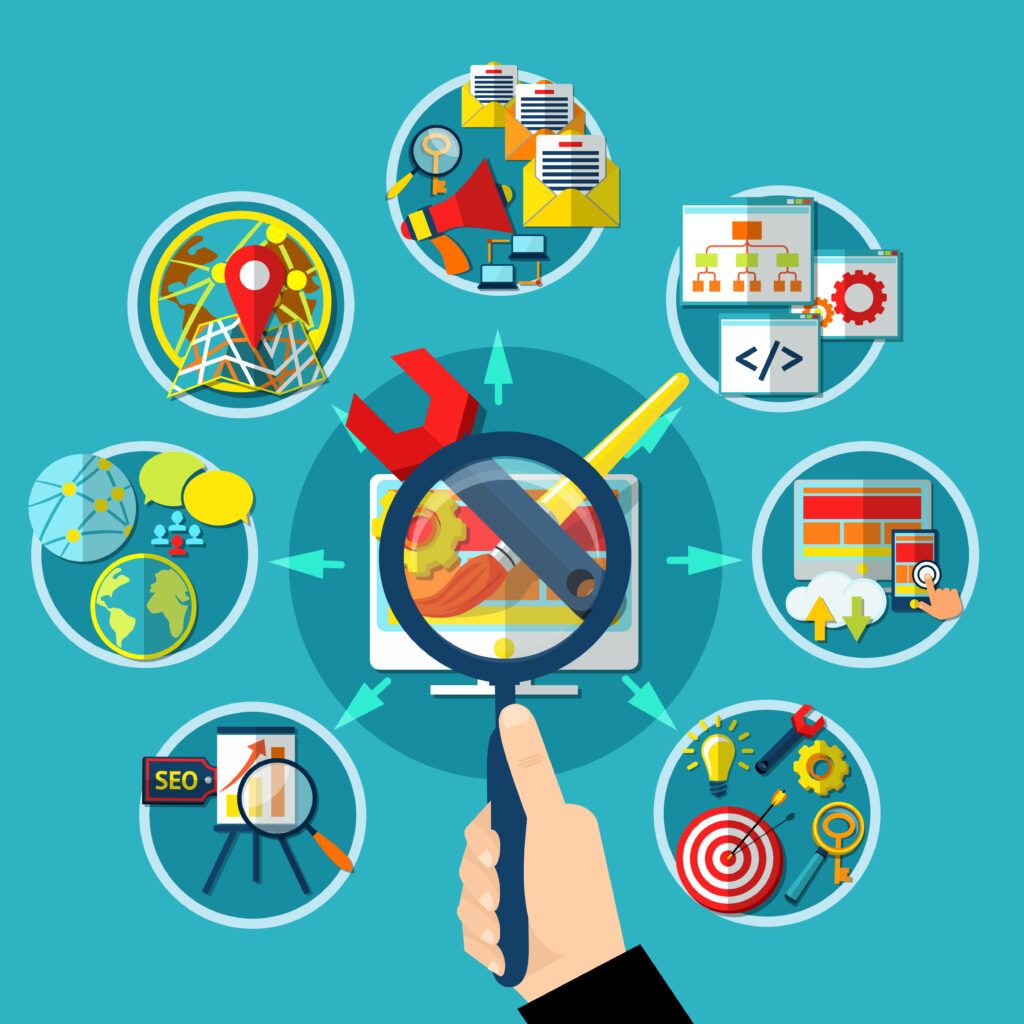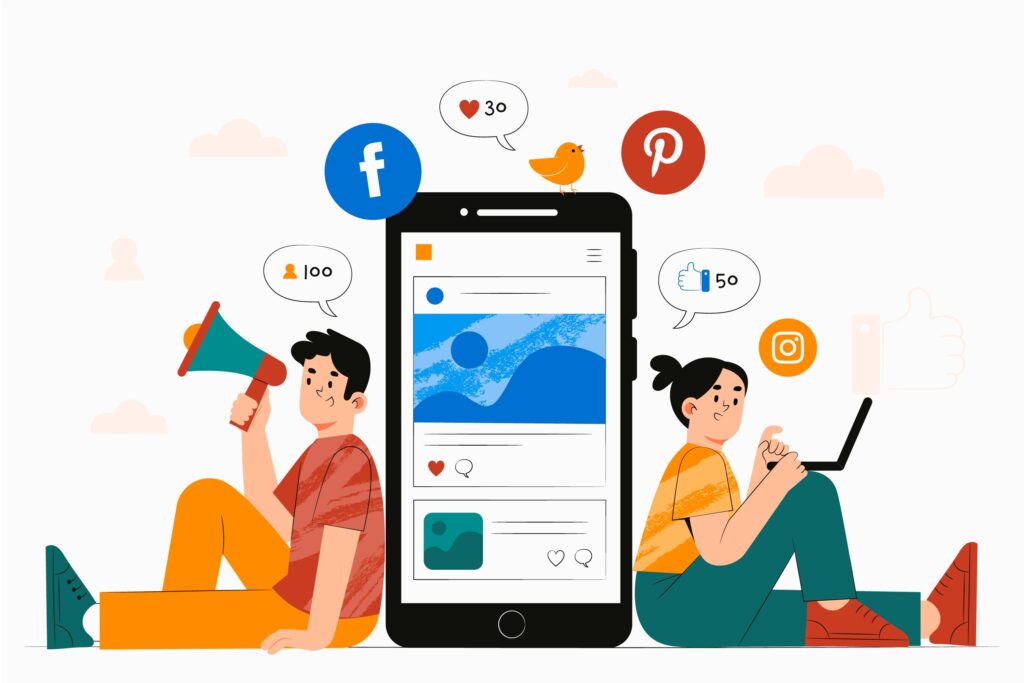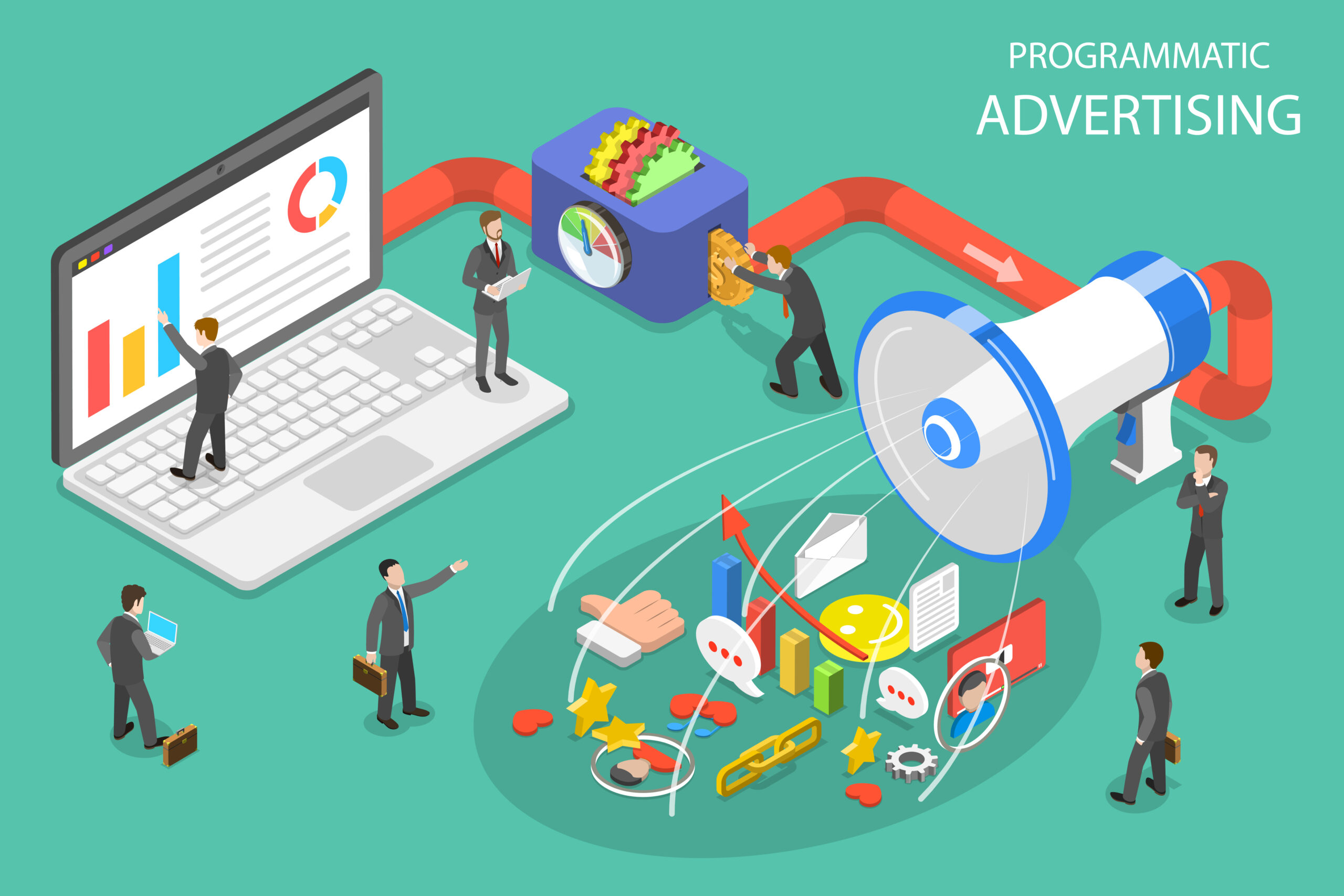In today’s fast-paced digital world, advertisers are constantly searching for innovative ways to optimize their campaigns and reach their target audiences effectively. One of the most transformative innovations in the digital advertising landscape is programmatic advertising. As businesses continue to shift toward data-driven marketing strategies, programmatic advertising has emerged as an efficient way to automate the buying and placement of ads, ensuring brands can deliver the right message to the right user at the right time. In this guide, we’ll delve into everything you need to know about programmatic advertising, from its mechanics to its advantages and future trends.
What is Programmatic Advertising?
Programmatic advertising is the automated process of buying and selling ad inventory in real time. This process leverages sophisticated algorithms and machine learning to target specific demographics, interests, and behaviors. Unlike traditional methods where advertisers manually negotiate prices and placements, programmatic uses technology to make those decisions in milliseconds, optimizing the ad delivery process.
The main difference between programmatic and traditional advertising is the automation. Where traditional ad buying might require human negotiations, programmatic uses algorithms to handle this automatically, leading to quicker, more efficient transactions and better-targeted ads.
The Evolution of Digital Advertising

Digital advertising has come a long way since the early days of static banner ads. In the past, advertisers would buy ad space directly from publishers, often through time-consuming negotiations and manual processes. As the internet grew and user behaviors became more complex, this system became inefficient and slow.
The need for faster, more precise targeting led to the development of ad networks, which allowed advertisers to purchase space across multiple sites. However, even ad networks were limited in their ability to target specific audiences. This gap paved the way for programmatic advertising, which not only allows for real-time transactions but also uses vast amounts of data to ensure the most relevant ads are displayed to the right users.
How Does Programmatic Advertising Work?
Programmatic advertising operates through a sophisticated network of technologies that automate the buying, placement, and optimization of ads. It involves several key components working together:
- Real-Time Bidding (RTB): This is the most common form of programmatic advertising. RTB allows advertisers to bid on ad impressions in real-time as users visit websites. The highest bidder wins the ad space, and their ad is displayed instantly.
- Demand-Side Platforms (DSP): Advertisers use DSPs to manage their bids and buy ad inventory across multiple platforms. DSPs use data to determine the best time and place to show ads based on user behavior and demographics.
- Supply-Side Platforms (SSP): Publishers use SSPs to sell their ad inventory to advertisers. SSPs connect to multiple DSPs to ensure publishers get the best possible price for their ad space.
- Ad Exchanges: These are digital marketplaces where DSPs and SSPs interact, allowing for the buying and selling of ad impressions in real-time.
The entire process happens in milliseconds, with algorithms analyzing the available data and making decisions based on relevance, price, and other factors.
Key Technologies Behind Programmatic Advertising
Several advanced technologies make programmatic advertising possible. These tools help to ensure efficiency, targeting precision, and real-time bidding. Key technologies include:
- Real-Time Bidding (RTB): As mentioned, RTB is an automated process where ad space is auctioned off in real time to the highest bidder.
- Demand-Side Platforms (DSP): DSPs enable advertisers to set parameters for ad placement, such as audience targeting, budget, and bid price. DSPs then handle the bidding and placement automatically.
- Supply-Side Platforms (SSP): On the publisher side, SSPs allow for inventory to be auctioned off to advertisers. SSPs work to maximize the revenue from ad space by ensuring it is sold to the highest bidder.
- Data Management Platforms (DMP): DMPs collect and analyze vast amounts of data about users. Advertisers use DMPs to create highly targeted audiences by combining first-party, second-party, and third-party data.

Types of Programmatic Advertising
Programmatic advertising comes in different forms, depending on how the ad inventory is purchased. The main types include:
- Open Auctions: Also known as RTB, this is the most common form of programmatic advertising. It’s a public auction where ad inventory is available to all buyers.
- Private Marketplace (PMP) Deals: PMP deals are invitation-only auctions where specific advertisers are allowed to bid on premium inventory.
- Programmatic Direct: In this model, advertisers and publishers negotiate ad placements directly, without auctions. This is often used for premium ad space, offering guaranteed placements.
- Preferred Deals: Similar to PMPs, but the publisher and advertiser agree on a fixed price before the ad is served, without any auction taking place.
Each type of programmatic advertising has its own advantages, depending on the goals and budget of the advertiser. While open auctions offer wide reach, private deals often come with premium placements and better brand safety.
The Benefits of Programmatic Advertising
Programmatic advertising has revolutionized the way brands reach their target audiences, offering numerous benefits over traditional ad buying methods. Some of the key advantages include:
- Efficiency and Speed: Programmatic advertising automates the process of ad buying, significantly reducing the time and manual effort required to run campaigns. It enables real-time ad placements across multiple platforms with minimal human intervention.
- Precision Targeting: Programmatic leverages data to deliver highly targeted ads. Advertisers can reach specific audience segments based on demographics, interests, behaviors, location, and more, ensuring the right message is delivered to the right person at the right time.
- Scalability: With programmatic, advertisers can scale their campaigns effortlessly. Ads can be placed across thousands of websites and apps, allowing brands to expand their reach and exposure quickly.
- Cost-Effectiveness: By using real-time bidding, advertisers can optimize their budgets and only pay for impressions that are relevant to their target audience, reducing wasted ad spend.
- Real-Time Optimization: Programmatic platforms continuously analyze campaign performance, allowing advertisers to adjust bids, targeting, and creatives in real-time to maximize results.
These benefits make programmatic advertising an essential tool for marketers aiming to improve the efficiency, reach, and effectiveness of their digital campaigns.
Programmatic Advertising vs. Traditional Ad Buying
While both programmatic and traditional ad buying aim to reach target audiences, the two methods differ in several important ways:
- Automation: Programmatic advertising automates the entire process, while traditional ad buying typically involves manual negotiations, ad placement, and campaign management. Programmatic allows advertisers to buy impressions in real time, whereas traditional methods may take days or weeks to finalize.
- Data Utilization: Programmatic relies heavily on data to target ads based on user behavior, interests, and demographics. Traditional ad buying often targets broad audience groups with limited targeting precision.
- Flexibility and Optimization: With programmatic, campaigns can be adjusted in real-time based on performance data, allowing for continuous optimization. Traditional ad buying often lacks this flexibility, as contracts are typically fixed once they are signed.
- Cost Efficiency: Programmatic advertising tends to be more cost-effective because advertisers only pay for relevant impressions, reducing waste. Traditional methods may involve higher upfront costs with less accurate targeting.
The precision and automation of programmatic make it a superior choice for modern marketers looking to streamline their campaigns and improve their return on investment.
Challenges and Risks in Programmatic Advertising
Despite its many advantages, programmatic advertising also comes with challenges and risks that marketers need to be aware of:
- Ad Fraud: One of the biggest concerns in programmatic advertising is ad fraud, which occurs when fraudulent traffic, bots, or fake websites are used to generate impressions or clicks. This can result in wasted ad spend and inaccurate campaign data.
- Viewability Issues: Not all ads are guaranteed to be seen by users. Some ads may be placed in positions on a webpage where they are less likely to be viewed, leading to low viewability rates.
- Brand Safety: There’s a risk of ads appearing next to inappropriate or harmful content, which can damage the brand’s reputation. Advertisers need to ensure that their ads are placed in brand-safe environments.
- Data Privacy: With the increasing focus on user privacy and regulations like GDPR and CCPA, advertisers must be careful with how they collect and use data for targeting. Failure to comply with privacy laws can result in penalties and a loss of consumer trust.
To mitigate these risks, advertisers should use trusted programmatic platforms, monitor campaigns closely, and implement measures to enhance brand safety and combat fraud.
Programmatic Advertising for Different Platforms

Programmatic advertising isn’t limited to just one type of digital ad. It can be utilized across multiple platforms, each offering unique opportunities to reach audiences. Here are the main platforms where programmatic advertising is most effective:
- Display Networks: Programmatic display ads are the most common. These are banner ads that appear on websites, apps, and other digital platforms. Programmatic technology helps deliver these ads to the most relevant users in real-time, enhancing engagement and conversions.
- Video Advertising: Programmatic video advertising allows brands to target audiences with video content across platforms like YouTube and other video-hosting sites. With video content growing in popularity, programmatic video ads provide a way to reach users in a more engaging format.
- Mobile Advertising: Programmatic mobile ads are increasingly popular as more users shift to mobile devices. These ads can appear in apps, mobile websites, and social media platforms, allowing for highly targeted campaigns tailored to user behavior on mobile devices.
- Native Advertising: Native ads blend in with the content of a website or app, offering a more seamless user experience. Programmatic technology helps ensure these ads are served to the right audience while matching the style and format of the platform where they appear.
As consumer habits evolve, programmatic advertising continues to adapt, providing advertisers with the flexibility to engage users across multiple digital touchpoints.
The Role of Data in Programmatic Advertising
Data plays a critical role in the success of programmatic advertising. It helps advertisers reach the right audience and optimize campaigns based on performance insights. There are three primary types of data used in programmatic advertising:
- First-Party Data: This is data that a brand collects directly from its own customers, such as website visits, purchase history, or email subscriptions. First-party data is highly valuable as it reflects direct customer interactions with the brand.
- Second-Party Data: This is another company’s first-party data that is shared with a brand. For example, two companies might partner to share data, allowing for broader audience targeting.
- Third-Party Data: Third-party data is collected by external companies that sell it to advertisers. It is used to target a wider audience based on demographic, geographic, or behavioral criteria.
The effective use of data allows advertisers to refine targeting, ensuring that ads are shown to users who are most likely to engage and convert. In the age of personalization, data is the backbone of any successful programmatic campaign.
Best Practices for Programmatic Advertising Success
While programmatic advertising can be highly effective, it’s essential to follow certain best practices to maximize campaign success. Here are key strategies to ensure optimal results:
- Utilize Data Insights for Targeting: Make sure to leverage first-party, second-party, and third-party data to refine your audience targeting. The more personalized your ads are, the better they’ll perform.
- Select the Right Platforms: Choose the programmatic platforms that align with your campaign goals and target audience. Consider whether display, video, mobile, or native ads will best reach your audience.
- Set Clear Campaign Goals: Whether your goal is brand awareness, lead generation, or sales conversions, having clear objectives will help you measure success and adjust your strategies accordingly.
- Ensure Brand Safety: Take measures to avoid ad placements in environments that could harm your brand’s reputation. This includes using whitelists, blacklists, and working with trusted programmatic partners.
- Monitor and Optimize: Programmatic advertising allows for real-time adjustments. Monitor performance data regularly and optimize your bids, targeting, and creatives to improve campaign outcomes.
By following these best practices, advertisers can enhance the effectiveness of their programmatic campaigns and achieve higher returns on investment.
The Future of Programmatic Advertising
The future of programmatic advertising looks bright as it continues to evolve with new technologies and trends. Here are some of the key trends that are shaping the future of this dynamic industry:
- Growth of Programmatic in CTV and OTT: Programmatic advertising is expanding beyond traditional display and video ads into Connected TV (CTV) and Over-the-Top (OTT) platforms, allowing brands to reach audiences through smart TVs and streaming services. As more consumers cut the cord on traditional TV, programmatic in these areas is expected to grow exponentially.
- AI and Machine Learning Integration: Artificial intelligence and machine learning are becoming integral to programmatic advertising. These technologies help analyze vast amounts of data to make smarter, faster decisions, improving targeting, bidding strategies, and ad personalization.
- Privacy and Data Regulations: With increasing regulations like GDPR and CCPA, advertisers will need to navigate a complex landscape of privacy concerns. The future of programmatic will likely focus on balancing personalized targeting with user privacy.
- Programmatic Audio Advertising: Programmatic is also making its way into audio platforms such as podcasts and streaming music services, opening up new opportunities for advertisers to reach listeners with personalized ads.
As programmatic advertising continues to grow, it will become more integrated across various digital channels, offering even more opportunities for advertisers to engage with their audiences in innovative ways.
Case Studies: Successful Programmatic Advertising Campaigns
Many brands have already seen tremendous success using programmatic advertising. Below are a few examples of companies that have leveraged the technology to boost their marketing efforts:
- Procter & Gamble: Procter & Gamble shifted a large portion of their digital advertising budget to programmatic platforms, allowing them to reduce wasted ad spend and improve targeting. By focusing on high-quality ad placements, P&G was able to enhance brand safety and optimize their campaigns in real-time.
- The Economist: The Economist used programmatic advertising to boost subscriptions by targeting readers with personalized ads based on their interests and reading habits. The campaign resulted in a 66% increase in subscriptions and demonstrated the power of programmatic in driving conversions.
- Coca-Cola: Coca-Cola utilized programmatic advertising during a campaign to promote its “Share a Coke” initiative. By using personalized ads targeting specific demographics and geographical areas, Coca-Cola increased brand engagement and drove higher sales in targeted regions.
These examples highlight how programmatic advertising can be leveraged by brands to achieve meaningful results, from increasing subscriptions to improving sales.
Conclusion
Programmatic advertising has transformed the way brands reach their audiences, offering a faster, more efficient, and data-driven approach to digital marketing. With the ability to automate the buying process, target specific users, and optimize campaigns in real-time, programmatic is essential for any brand looking to stay competitive in today’s digital landscape.
While there are challenges, such as ad fraud and privacy concerns, the benefits far outweigh the risks when managed properly. As technology continues to evolve, so too will the capabilities of programmatic advertising, making it a powerful tool for marketers now and in the future.
FAQs
- What is the difference between programmatic and direct advertising? Programmatic advertising automates the process of buying ad space, using algorithms to target specific audiences, while direct advertising involves manually purchasing ad inventory, often through direct negotiations with publishers.
- How can small businesses benefit from programmatic advertising? Small businesses can benefit from programmatic by reaching their target audience more efficiently and cost-effectively. Programmatic allows small businesses to compete with larger companies by using data to target the right customers at the right time.
- Is programmatic advertising expensive? Programmatic advertising can be tailored to fit a range of budgets. Advertisers only pay for relevant impressions, making it a cost-effective option for many businesses. However, costs can vary depending on the targeting and platforms used.
- What is ad fraud, and how can I prevent it in programmatic campaigns? Ad fraud occurs when fraudulent traffic, such as bots or fake websites, generates fake impressions or clicks on ads. To prevent ad fraud, advertisers can work with trusted platforms, use third-party verification tools, and monitor campaigns for suspicious activity.
- Can programmatic ads run on social media platforms? Yes, programmatic advertising can run on social media platforms like Facebook, Instagram, Twitter, and LinkedIn. These platforms allow advertisers to target specific audience segments using programmatic technology.






Leave a Reply